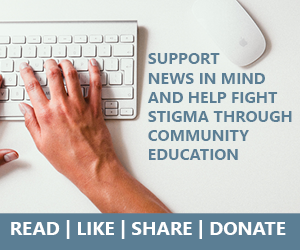As a provincial coroner and past palliative care physician, Dr. David Ouchterlony has seen suffering and death up close, experiences that have occasionally led to brief moments of sadness. But Ouchterlony describes such emotions as “trivial” compared to the dread he feels when thoughts about climate change linger, as they often do. He worries almost obsessively about a future he won’t see. How will younger generations be affected? Why are we failing to act on the threat?
“I was completely blind to it, and then five years ago it just hit me,” Ouchterlony, 74, said. “I went through this stage of losing sleep, thinking about my grandchild, wondering what I could do.”
He described the feeling as an “absence of hope” characterized by despair and, at times, exhausting guilt. Some researchers have called it a “pre-traumatic” stress disorder that, in some, is feeding anxiety and depressive thoughts.
Ouchterlony isn’t alone. Signs of mental distress related to climate change have appeared in vulnerable populations, from drought-stricken prairie farmers to isolated aboriginal communities and the scientists who crunch climate data.
Our fast-changing climate has long been identified as a threat to physical health, but more psychologists are warning that the mental health impacts and the economic toll they take are real, likely to spread and need closer study.
“We may not currently be thinking about how heavy the toll on our psyche will be, but, before long, we will know only too well,” warned a 2012 report from the U.S. National Wildlife Federation.
It predicted that cases of mental and social disorders will rise steeply as the signs of climate change become clearer and more frequent, and as more people are directly affected by heat waves, drought and other extreme events that put pressure on clean water resources, food prices and public infrastructure.
“These will include depressive and anxiety disorders, post-traumatic stress disorders, substance abuse, suicides and widespread outbreaks of violence,” predicted the report. It singled out children, the poor, the elderly and those with existing mental health problems as those likely to be hardest hit.
“At roughly 150 million people, these groups represent about one half of the American public,” it calculated. In addition, the mental health profession is “not even close to being prepared” and the report warned the existing problem is likely being underestimated because most research is based on self-reporting.
“People may, indeed, suffer from anxiety about climate change but not know it. They will have a vague unease about what is happening around them, the changes they see in nature, the weather events and the fact that records are being broken month after month. But they won’t be sufficiently aware of the source, and furthermore, we all conflate and layer one anxiety upon another.”
Jennie Ferrara, an American expat living in Copenhagen, began having episodes of climate-related anxiety and depression shortly after the first of her two children were born.
Life comes with all sorts of stresses, “but this one really broke the camel’s back for me,” said Ferrara, who as a therapeutic exercise started the blog Confessions of a Climate Worrier in 2011. “I’m convinced hordes of people are filing their mental malaise under divorce, the economy, or whatever, when it’s actually the slow drip of climate reality.”
The drips show up daily on social and mainstream media. We now know that 2015 was the hottest year on record. In the past few months alone, we have heard about snow in Saudi Arabia in January, back-to-back late-season cyclones in the Arabian Peninsula, a 500-year drought in California, the hottest ever Christmas Eve in Toronto and end-of-year temperatures in the North Pole that were warmer than parts of California — all extremely rare or unprecedented events being filed in our subconscious.
Behind the scenes, the 122,000-member American Psychological Association (APA) is taking the issue seriously. It set up a task force in 2008 to survey the limited research. A comprehensive report followed, leading to a member resolution in 2011 to recognize “the current and anticipated psychosocial impacts of climate change.” It also encouraged more awareness of this nascent field of study.
“I see parallels to the fears we went through in the 1950s about the world ending because of atomic war. There was this general dread among people, and this fear of annihilation,” said University of Victoria psychology professor Robert Gifford, who calls himself the “token Canadian” on the APA task force.
In Canada, the issue has barely landed on the radar. Karen Cohen, chief executive of the Canadian Psychological Association, said the organization had “no plans at present” to develop a position. Last year, the Mental Health Commission of Canada released a major report detailing 55 indicators that will be used to track mental illness and well-being among Canadians. There was no mention of climate change.
“I don’t know why the Canadian Psychology Association hasn’t been more active,” said Gifford, who speculates that most in the profession likely see it as a fringe issue. “We should do more.”
The climate casualties
Climate change can seem a distant threat, but not to these people:
Wounded on the front lines
Australian Joe Duggan began asking climate scientists in 2014 how they felt being on the front lines of climate science. The responses showed a level of emotion and concern the public never sees: “It makes me feel sick,” read one. “I feel exasperation and despair in equal measure,” says another. Scientists wrote of being “nervous,” “worried,” “anxious” and “depressed” by what they know. Duggan posted the letters on the website Is This How You Feel? and has been receiving submissions ever since. “These people write complex research papers, unpacking every aspect of climate change, analyzing it thoroughly and clinically,” Duggan writes. “But they’re not robots. These scientists are mothers, fathers, grandparents, daughters. They are real people. And they’re concerned.”
A “sleeping giant”

Mario Tama
The iconic Princess Cottage, built in 1855, remains standing after being ravaged by flooding on November 21, 2012 in Union Beach, New Jersey. Little more than half of the home remains and more than 200 homes were destroyed by Superstorm Sandy in the town.
Environmentalists also struggle. Many describe an epidemic of depression in their profession that can lead to broken marriages, mental breakdown and even suicide. “I’ve become aware of it with a lot of the young people I work with,” said Glen Murray, Ontario’s minister of environment and climate change.
Lawyer David Boyd describes it as “sleeping giant of a problem.” He wrote The Optimistic Environmentalist to counter the “relentless” bad news by highlighting the real progress. “For me, writing this was a voyage of recovery.”
After the storm — Calgary’s historic flood

Andy Clark
The historic Calgary flood of 2013 took the lives of five people and displaced tens of thousands. When the waters retreated the city looked like a war zone. Cars and waste were strewn everywhere and the Calgary Stampede grounds and the Saddledome arena were closed
Calgary real-estate agent Emma May remembers June 19, 2013, as the day her community was under water. “We’re still seeing the impacts — the divorces, the stress placed on families, some with PTSD,” says May. “There are kids in families who don’t want to live near the river ever again. Some cry when it begins to rain.”
Distress Centre Calgary, which provides 24-hour crisis support, says that since the 2013 flood call volumes have risen 30 per cent, including an increase in calls related to suicide ideation and domestic violence. “The emotional and mental well-being of those affected by the flood needs to be addressed and is likely to need support well into the future,” according to the centre.
“No one can argue our weather isn’t getting more severe,” says Catherine Bell, a board member with the centre. “We need to absolutely be doing something on all fronts as it relates to climate change and mental health.”
More frequent, more extreme

BEN STANSALL
The British medical journal Lancet estimated in June that we are four times more likely to be exposed to extreme rainfall later this century compared to 1990 levels.
Increased flooding — more frequent and more extreme — is probably the most visible impact of climate change, at least for city dwellers. We saw it in South Carolina last October and in the United Kingdom in December. A report in the British medical journal The Lancet last June estimated we are four times more likely to be exposed to extreme rainfall later this century compared to 1990 levels.
A July 2015 study from Rutgers University and NYU found that the emergence of mould in waterlogged houses after Hurricane Sandy was “significantly associated” with the rate of mental health distress. It also found that children living in hurricane-damaged homes were four times more likely to feel depressed and twice as likely to develop sleeping disorders. It caught public health officials off guard.
The already vulnerable

MICHAEL KIRBY SMITH
Members of a New York Police Department tactical team rescue Haley Rombi, 3, in the Dongon Hills neighborhood of the Staten Island borough of New York, Oct. 30, 2012. As Hurricane Sandy churned inland as a downgraded storm, residents up and down the battered mid-Atlantic region woke on Tuesday to lingering waters, darkened homes and the daunting task of cleaning up from storm surges and their devastating effects.
New immigrants, small children, the elderly and disabled and sufferers of existing mental health conditions, particularly those living in poverty, are more prone to experience psychological distress from the impacts of climate change, according to the American Psychological Association.
They are also more likely to live in low-income housing without air conditioning and in communities with poor infrastructure and access to services, making them vulnerable to flooding, heat waves and storms. Indirectly, rising food prices as a result of climate-related disruptions will put pressure on struggling low- and fixed-income households. “There are clear relationships between environmental risk, poverty and vulnerability,” wrote psychologists Thomas Doherty and Susan Clayton in a 2011 article in American Psychologist. “Paradoxically, the people that face the highest risk of impacts are the least well-prepared.”
This article first appeared on ‘The Star’ on 9 February 2016.

Expert advice to help stressed-out kids and their parents
March 14, 2018
What Is A Nervous Breakdown – And Could You Be At Risk?
March 13, 2018


























